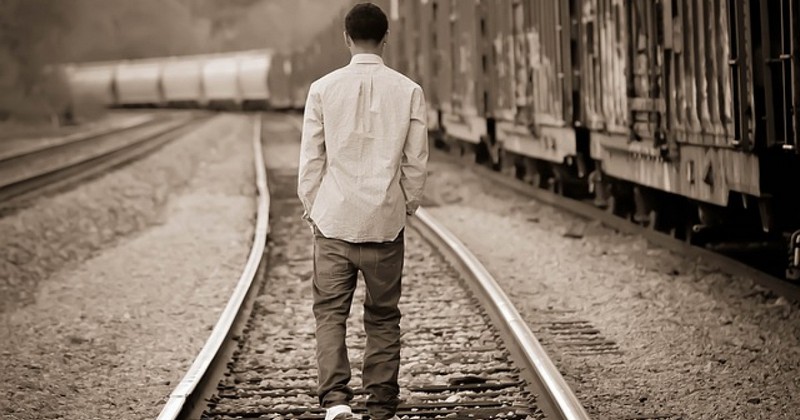The influence of child sexual abuse on adolescent suicide cases.

A revealing report on the relationship between these two phenomena.
We are living in an era in which more and more cases of sexual abuse in childhood are coming to light. cases of sexual abuse in childhood, it might even seem that there is a boom in this type of abuse, although what is really happening is that they are becoming more and more visible.
According to studies, around 7.4% of males and 19.2% of females have been victims of this type of abuse.However, these figures cannot be taken as decisive due to the high number of cases that go unreported.
Sexual abuse in childhood: a silenced reality
Contrary to popular belief the most frequent sexual abuse of children is committed within the family and by a person with whom the child is intimate. and by a person with whom the child has an affective and trusting relationship.
Studies also reveal that in a high percentage of cases the abuse takes place in the context of a game, in which the adult uses the children to participate without being aware of the implications of such behaviors, and that is why in many cases these behaviors go unnoticed by the rest of the family members, who are unaware of the facts.
The effects of having suffered sexual abuse in childhood
But what are the implications of sexual abuse in childhood?
Studies carried out to this effect inform us that pon both short- and long-term symptoms can appear and that these symptoms can affect all facets of the child's life. can affect all facets of the child's life.
Although it is considered that around 30% of victims of sexual abuse do not present associated symptoms, the rest of the victims usually present a series of problems both in the short and long term among which are anxiety, depression, low self-esteem, feelings of guilt, stigmatization, attention and concentration problems, relationship problems, sleep disorders, disinhibited sexual behavior, suicidal ideation and suicide attempts, among other symptoms, which over time and if they persist can worsen to the appearance of depressive and bipolar disorders, post-traumatic stress disorders, borderline personality disorders and self-destructive and self-harming behaviors (Pereda, 2009).
Suicides: numbers and facts
One of the most serious consequences, given the intentionality of ending one's own life, is suicide. Around 50% of sexually abused men and women who have 67% of the women have or have had suicidal ideation and a considerable percentage of them have attempted to end their lives (11% of women and 4% of men).
More on this topic: "Suicides: data, statistics and associated mental disorders".
But is there data to support this claim? The answer is yes. Studies on adolescent suicide are scarce due to their social impact and the fact that, as in the case of sexual abuse, these are problems that remain underlying and do not come to light easily, but as early as 1991 Cirillo and Blasco suggested that victims of sexual abuse who had not felt listened to or protected had a tendency to present self-aggressive behaviors that could lead to suicide.
Another study reveals that The severity of the maltreatment, without distinction of category, in childhood is associated with suicide in adults at a rate of 5.53% and that the severity of the maltreatment could even influence the onset and frequency of these attempts, there appearing to be a correlation between suicide attempts and attempts and the time elapsed since the abuse occurred, since these behaviors appeared around 2 years after having suffered them (González-Forteza, Ramos Lira, Vignau Brambila and Ramírez Villarreal, 2001).
Several conclusions
In view of these figures it seems clear that there is an important correlation between having suffered sexual abuse in childhood and making suicide attempts in adolescence..
Although it is not the only cause that motivates them, studies based only on adolescent suicide attempts present as risk factors for this type of behavior, in addition to childhood abuse, the existence of family dysfunction, anxious-depressive symptoms and behavioral problems. family dysfunction, anxious-depressive symptoms and behavioral problems. Even so, the data are alarming and reveal the enormous consequences at both the psychological and physical level that abused persons can suffer during childhood.
Bibliographical references:
- González-Forteza, C., Ramos Lira, L., Vignau Brambila, L. B. and Ramírez Villareal, C. (2001).Sexual abuse and suicide attempt associated with depressive distress and suicidal ideation in adolescents. Salud Mental México, 24, N.6, Dec.
- Larraguibel, M.; González, P.; Martínez, V.; Valenzuela, R. (2000). Risk factors for suicidal behavior in children and adolescents. Revista chilena de pediatría, 71, 3.Mayo.
- Páramo Castillo, D., Chávez Hernández, A. M. (2007) Child abuse and suicide in the State of Guanajuato. Salud Mental, 30, nº3, May-June. Pág. 59-67.
- Pereda, N., (2009). Initial psychological consequences of child sexual abuse. Papeles del psicólogo, 30(2), pp135-144.
- Pereda, N., (2010). Long-term psychological consequences of child sexual abuse. Papeles del psicólogo, 31(2), pp191-201.
(Updated at Apr 12 / 2024)